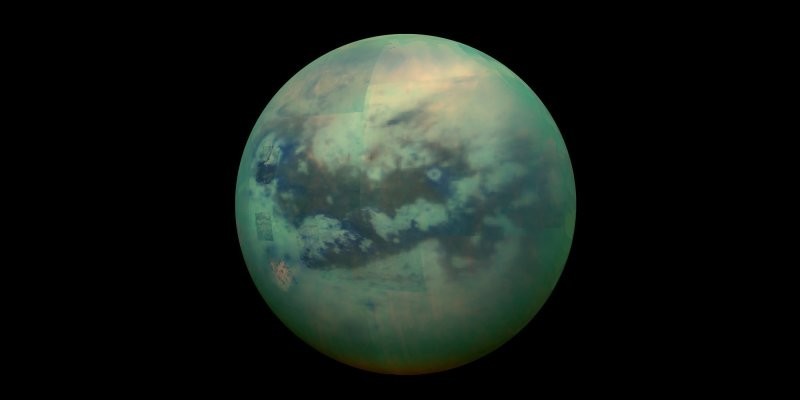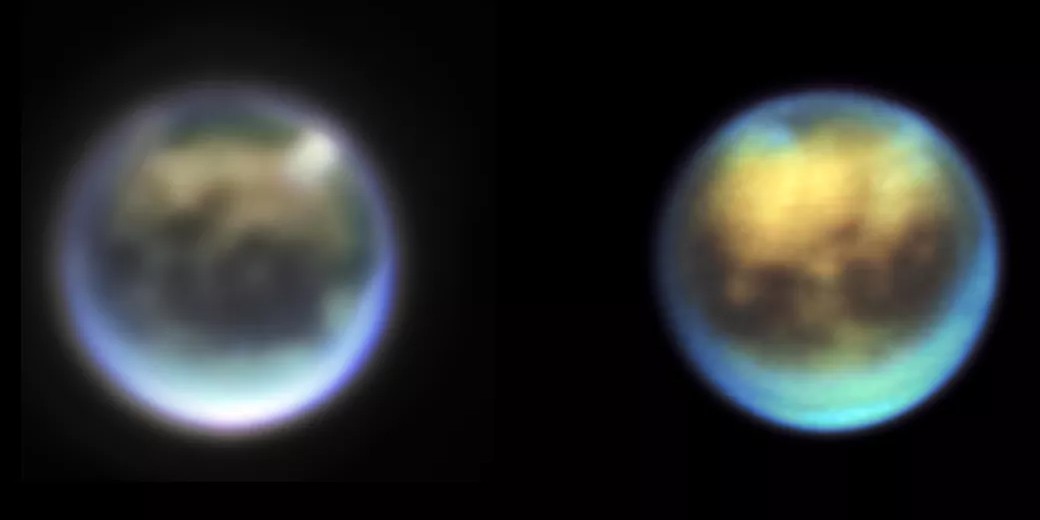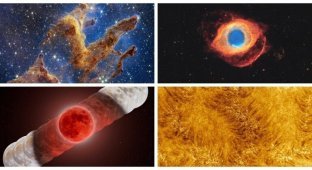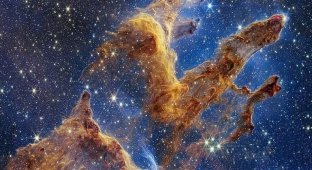The James Webb telescope made it possible to see clouds on Titan, Saturn's moon (4 photos)
Scientists believe that its dense fog hides vast fields of dunes, as well as lakes, seas and rivers. 
Observing clouds has always helped scientists learn more about the planet's atmosphere. And this is true not only for the Earth, but also for Titan is the only satellite in the solar system with a dense atmosphere. Recently, astronomers managed to take two pictures of this moon, proving the movement of cloud masses.
The first picture was taken with the latest telescope "James Webb." Sebastian Rodriguez, planetary scientist at the University of Paris-Cite, in Email to the Titan Observation Team at the Space Center NASA Goddard wrote:
At first glance, this is simply extraordinary! I think we see a cloud!
Goddard's team was delighted to see the clouds, but Webb only showed a one-shot image. To really to understand how Titan's atmosphere works, researchers needed to several frames confirming that the clouds are changing shape. That's why The scientists turned to colleagues at the Keck Observatory in Hawaii. 
Webb image on the left, Keck Observatory on the right / NASA, ESA, CSA
Fortunately, the clouds had not cleared by the time the team Keka made her observations a couple of days later. Their frame was different, but corresponded to the theory of astronomers: cloud A probably rotates in the field vision, while cloud B is either dispersing or moving along towards the hemisphere facing away from us 
Image: NASA, ESA, CSA
Titan's atmosphere is rich in nitrogen and methane and extends for 600 kilometers into space, which is 10 times the height of the Earth's atmosphere. On its outer edges, solar radiation breaks up methane and nitrogen molecules, and the remaining parts recombine into large organic molecules, which create a very dense fog.
This haze blocks visible light, making it difficult to see Titan. Fortunately, James Webb's infrared cameras can provide scientists with an unprecedented view of the lower atmosphere and even satellite surface.
Scientists believe that the haze hides vast fields of dunes, as well as lakes, seas and rivers of liquid hydrocarbons such as methane and ethane. AND deep under the surface of the satellite may be hiding an ocean with salt liquid water, making Titan a candidate for potential life beyond outside of the Earth. 
Composite image of Titan taken by the Cassini spacecraft / NASA
Using Near Infrared Spectrograph Data "James Webb" scientists will soon be able to study the composition of the lower layers Titan's atmosphere, which cannot be observed with ground-based telescopes such as Keck.























